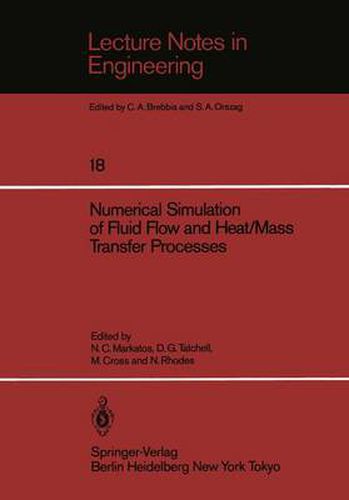Readings Newsletter
Become a Readings Member to make your shopping experience even easier.
Sign in or sign up for free!
You’re not far away from qualifying for FREE standard shipping within Australia
You’ve qualified for FREE standard shipping within Australia
The cart is loading…






This title is printed to order. This book may have been self-published. If so, we cannot guarantee the quality of the content. In the main most books will have gone through the editing process however some may not. We therefore suggest that you be aware of this before ordering this book. If in doubt check either the author or publisher’s details as we are unable to accept any returns unless they are faulty. Please contact us if you have any questions.
Computational fluid flow is not an easy subject. Not only is the mathematical representation of physico-chemical hydrodynamics complex, but the accurate numerical solution of the resulting equations has challenged many numerate scientists and engineers over the past two decades. The modelling of physical phenomena and testing of new numerical schemes has been aided in the last 10 years or so by a number of basic fluid flow programs (MAC, TEACH, 2-E-FIX, GENMIX, etc). However, in 1981 a program (perhaps more precisely, a software product) called PHOENICS was released that was then (and still remains) arguably, the most powerful computational tool in the whole area of endeavour surrounding fluid dynamics. The aim of PHOENICS is to provide a framework for the modelling of complex processes involving fluid flow, heat transfer and chemical reactions. PHOENICS has now been is use for four years by a wide range of users across the world. It was thus perceived as useful to provide a forum for PHOENICS users to share their experiences in trying to address a wide range of problems. So it was that the First International PHOENICS Users Conference was conceived and planned for September 1985. The location, at the Dartford Campus of Thames Polytechnic, in the event, proved to be an ideal site, encouraging substantial interaction between the participants.
$9.00 standard shipping within Australia
FREE standard shipping within Australia for orders over $100.00
Express & International shipping calculated at checkout
This title is printed to order. This book may have been self-published. If so, we cannot guarantee the quality of the content. In the main most books will have gone through the editing process however some may not. We therefore suggest that you be aware of this before ordering this book. If in doubt check either the author or publisher’s details as we are unable to accept any returns unless they are faulty. Please contact us if you have any questions.
Computational fluid flow is not an easy subject. Not only is the mathematical representation of physico-chemical hydrodynamics complex, but the accurate numerical solution of the resulting equations has challenged many numerate scientists and engineers over the past two decades. The modelling of physical phenomena and testing of new numerical schemes has been aided in the last 10 years or so by a number of basic fluid flow programs (MAC, TEACH, 2-E-FIX, GENMIX, etc). However, in 1981 a program (perhaps more precisely, a software product) called PHOENICS was released that was then (and still remains) arguably, the most powerful computational tool in the whole area of endeavour surrounding fluid dynamics. The aim of PHOENICS is to provide a framework for the modelling of complex processes involving fluid flow, heat transfer and chemical reactions. PHOENICS has now been is use for four years by a wide range of users across the world. It was thus perceived as useful to provide a forum for PHOENICS users to share their experiences in trying to address a wide range of problems. So it was that the First International PHOENICS Users Conference was conceived and planned for September 1985. The location, at the Dartford Campus of Thames Polytechnic, in the event, proved to be an ideal site, encouraging substantial interaction between the participants.